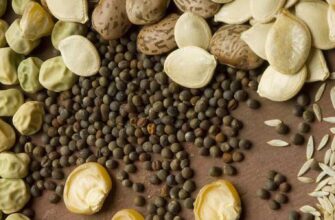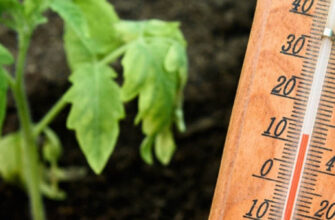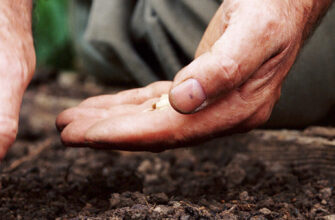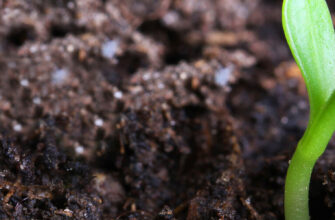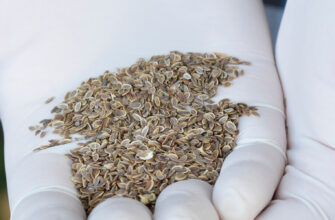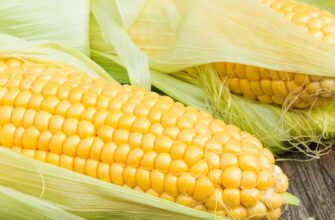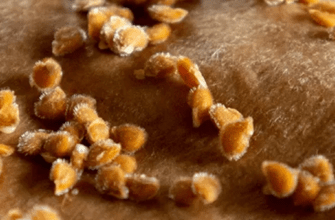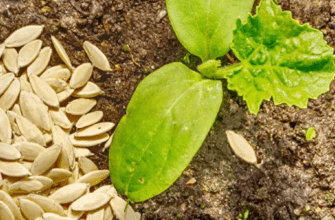Numerous factors influence seed germination, and it’s nearly impossible to account for every single one, as each case is unique and has its own nuances. In this article, we’ve highlighted the most common and critical factors: temperature, pests, soil conditions, watering, herbicides, and cultivation errors. Below, we explore each factor in detail.
Temperature
Temperature typically plays a decisive role in seed germination for any crop. The optimal average temperature for seed germination is between 68–86°F (+20–30°C), with an average germination period of 7–12 days (±3 days depending on the crop). More precise data on germination periods and temperature requirements for seeds of various vegetables and greens are provided in the table below:
| Culture | Shelf life at optimum temperature and humidity (loss of germination no more than 5%), years | Shelf life under normal conditions (loss of germination no more than 30%), years | Minimum germination temperature, t°С | Seed germination time at a temperature of +20°C, days |
| Watermelon | 6-8 | 5-6 | 13-15 | 8-15 |
| Eggplant | 3-5 | 2-3 | 13-14 | 8-14 |
| Peas | 5-8 | 4-5 | 2-5 | 8-10 |
| Daikon | 3-5 | 2-3 | 2-4 | 8-15 |
| Melon | 6-7 | 5-6 | 10-12 | 4-8 |
| Zucchini | 6-7 | 4-6 | 10-12 | 4-8 |
| Cabbages | 4-5 | 4 | 2-3 | 5-10 |
| Sweet corn | 5-8 | 3-4 | 15-20 | 10 |
| Leeks and turnips | 3-4 | 2 | 3-5 | 12 |
| Carrot | 3-5 | 2 | 4-5 | 10 |
| Pepper | 3 | 2 | 14-15 | 14 |
| Parsley | 2-3 | 2 | 17-20 | 15 |
| Radish | 3 | 2 | 15-17 | 6 |
| Salad | 3-4 | 2 | 15-17 | 4 |
| Beet | 4 | 3 | 20-22 | 7 |
| Celery | 1-2 | 1 | 18-20 | 15 |
| Tomatoes | 3-5 | 2-3 | 22-25 | 8 |
| Beans | 3-5 | 3-4 | 17-18 | 7 |
| Spinach | 2-3 | 1-2 | 15-21 | 10 |
If the temperature falls below the required level, germination will stall, and seeds will become vulnerable to diseases, resulting in weak, unhealthy plants. The easiest way to avoid such issues is by growing seedlings in a controlled environment. Find or set up a space where the optimal temperature can be maintained. Notably, sunlight is not necessary during germination.
You can stack seed trays, cover them with plastic wrap, and water them once a day. A slight bottom heat source can help maintain soil temperatures between 68–86°F (20–30°C), depending on the crop. However, if you place trays in a warm, sunny location, be cautious—direct sunlight can quickly dry out the soil, potentially killing the seedlings. In such cases, check the soil two to three times a day. If temperatures are moderate, avoid overwatering, as excessive moisture can cause seeds to rot.
Contaminated Soil
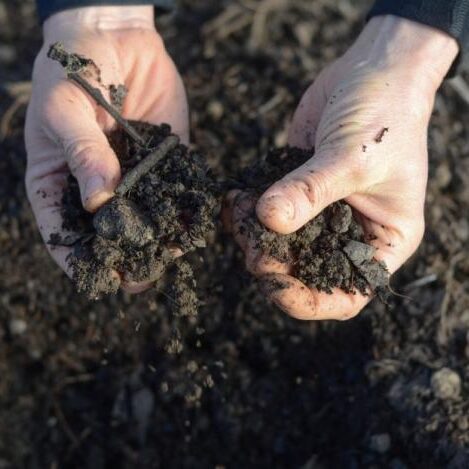
When sowing seeds directly into open ground or using garden or forest soil for trays, it’s likely that the soil is contaminated, which is a key factor in understanding what affects the germination of seeds. Diseases in the soil are often invisible to the naked eye, and unless you can send a sample for lab analysis, it’s wise to take precautions.
Effective soil sterilization methods include:
- Thermal treatment (roasting or steaming).
- Chemical treatment using products like Previcur or Fundazol.
- Biological treatment by introducing beneficial fungi, bacteria, or other microorganisms. Products such as Fitohelp, Mikofelp, Trichodermin, Fitotsid, Planriz, EM-1, Baikal, Nematofagin, or Actofit can help. These “good” organisms colonize the soil quickly, preventing the spread of pathogens.
Soil Pests
Those who prefer direct sowing over seedling methods often encounter soil pests like nematodes, wireworms, or moths due to inadequate preventive measures. The most effective solution is using insecticides such as Regent, Force, or Geravitox. For nematodes, Nematofagin—a product based on predatory fungi that target pests—can also be effective.
Herbicide Aftereffects
Avoiding herbicides is increasingly challenging, as weeds grow rapidly and can choke out desirable plants. While herbicides help manage this issue, many leave residues in the soil that persist into the following year, a phenomenon known as “aftereffect.” This can significantly hinder seed germination.

To mitigate this, keep records of the herbicides you use and research their residual effects. Whenever possible, choose herbicides with minimal or no aftereffect.
Improper Watering
As mentioned earlier, overwatering can cause seeds to rot. However, inconsistent watering is equally problematic. In seed trays, smaller cells dry out faster, requiring closer attention to moisture levels. Insufficient watering can also reduce germination rates.
If you want to simplify watering, use trays with 5×5 cm cells, as they retain moisture longer and typically require only one daily watering.
Conclusion
The primary reason for poor seed germination is often the failure to follow proper cultivation techniques and storage conditions. Study the recommended growing process before planting, adhere to agronomists’ guidelines, and you’ll likely achieve a bountiful harvest.
What If All Guidelines Are Followed?
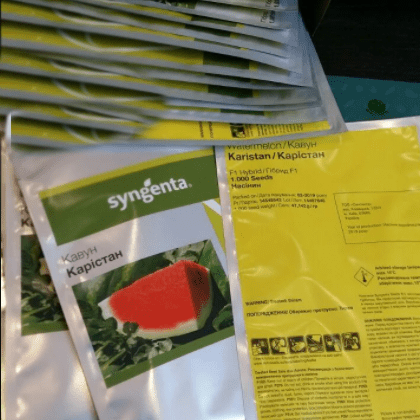
If you’ve adhered to all the above recommendations and still see no germination, the issue may lie with poor-quality seeds. While rare, as reputable suppliers prioritize quality, it can happen.
Always keep seed packets, as they serve as proof of purchase and contain critical details like the production year and batch number.
These allow you to report issues to the supplier, who can test the batch and assist with resolving the problem, ensuring your harvest remains a priority.
How to Test Seed Germination
For older or home-collected seeds, test germination before planting to avoid wasted effort. Start by sorting out damaged or discolored seeds. Here are several methods to test germination:
Germination on Moist Towels
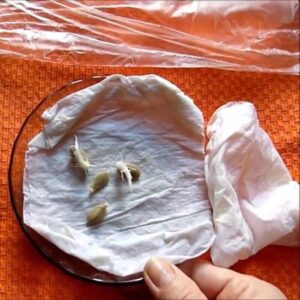
Place seeds on a plate or Petri dish lined with moistened cloth, paper towels, or cotton. Cover with another layer of moist material and wrap with plastic film.
Store in a dark place at 68–73°F (20–23°C). Check daily, airing and moistening to prevent drying or rotting.
Sprouts should appear in 4–5 days, though some crops may take 7–14 days (see the “Temperature” section). Calculate the germination rate (e.g., 14 out of 20 seeds = 70%).
Germination in Sawdust
Ideal for larger seeds (peas, watermelon, pumpkin, corn, etc.). Sterilize sawdust with boiling water 2–3 times, then place it in containers. Sow seeds, lightly tamp down, and cover with plastic wrap. Keep in a warm place, airing and moistening regularly. Count sprouts after the required time.
Roll Method
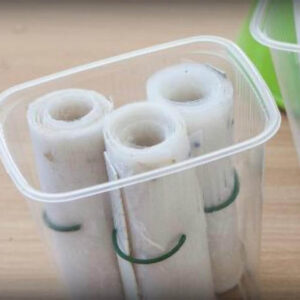
Use medium-density paper (e.g., from a notebook).
Wet a 25×25 cm sheet, drain excess water, and spread seeds in 1–2 rows.
Roll the paper, place it in a glass of water (ensuring seeds don’t touch the water), and keep it in a shaded area.
After the required time, unroll and count sprouted seeds.
Test Sowing
Sow seeds in soil-filled containers, cover with plastic or glass, and maintain appropriate depth for the crop. Air and water 1–2 times daily. Once sprouting stops for two days, calculate the germination rate.
Salt Solution Viability Test
For crops like tomatoes, peppers, radishes, cabbage, or cucumbers, use a 3–5% salt solution (1 tsp salt per liter of warm water). Submerge seeds, stir, and let sit for 30 minutes. Discard floating seeds; those that sink are viable. Rinse viable seeds with clean water and dry. Note that overly dry seeds may float but still germinate, though more slowly.
If you have found a spelling error, please, notify us by selecting that text and pressing Ctrl+Enter.

